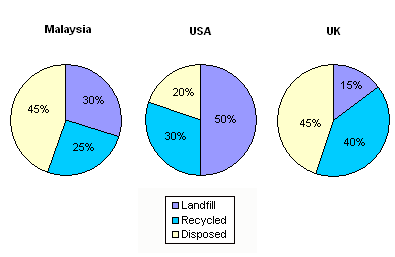Most of the failures in this test is a sense of nervousness. most
people are not confident because of the accent and the language they
used was accustomed spoken. There are some tips and tricks that you need
to know in IELTS academic speaking. One of those is the use of the
right verb.
Menyajikan RATUSAN tips dan trik IELTS. Cara paling mudah belajar IELTS hanya di englishstudio.id Kampung Inggris Pare
Minggu, 22 Februari 2015
Don't Let Nervousness Ruin Your Practice
Label:
speaking
 Mengajar IELTS sejak 2010 dan mendirikan "English Studio Indonesia" di 2014
Mengajar IELTS sejak 2010 dan mendirikan "English Studio Indonesia" di 2014
Fast Reading Techniques for IELTS
Having an
effective reading and notetaking strategy is important in IELTS reading test.
Time spent thinking and planning can save unnecessary work. There are some tips
you should learn in reading English text:
- Take notes, add margin comments or highlight sections.
- Pay attention to the structure of a text to help you to understand the writer's purpose and argument. Take notice of headings and sub-headings, of opening and closing paragraphs and of other signposts the writer has provided.
- Try to understand what you are reading, rather than simply memorizing what you have read. Consider whether you agree with the content and think about how it compares to any other reading you've done on the same topic. This effort to understand is itself an aid to memorizing.
- As you work through module activities, jot down a record of your work. You'll then avoid the need to work through these activities a second time for assignment questions and revision.
In practices,
read some different topics of texts, then keep a dictionary or your module
glossary to hand and look up any terms you don't understand. Accept that
sometimes you need to re-read in order to check your understanding, reconsider
particular points of interest and to add to your notes. Even though in real
test, there's no one will help you to understand the text or the questions,
still in exercises you can ask your friends before you take the test. Discuss
many different topics and learn something new.
Label:
reading
 Mengajar IELTS sejak 2010 dan mendirikan "English Studio Indonesia" di 2014
Mengajar IELTS sejak 2010 dan mendirikan "English Studio Indonesia" di 2014
IELTS History : Test Format and Revision
In
the previous explanation, has described about beginnings formed ELTS
exam / IELTS. And now, author will describe about Test development and
Revision from year to year. Enjoy ;)
The
ELTS test offered a choice of six modules covering five broad areas of
study of UK tertiary education, plus one non-specific area. The six
modules were:
Label:
random
 Mengajar IELTS sejak 2010 dan mendirikan "English Studio Indonesia" di 2014
Mengajar IELTS sejak 2010 dan mendirikan "English Studio Indonesia" di 2014
The Structure of Writing Task 1
IELTS Writing Task 1 is academic writing intended for a university lecturer so you should use appropriate, academic words. You have to describe a graph in the form of report or essay. You will meet several different graphs in a IELTS Writing Task 1: Single line graph, Double line graph, Bar Graph, Pie Chart, Table, or Process.
Some rules in describing graph, chart, process or table are:
- Your report must be of at least 150 words written in 20 minutes.
- Do not write your opinion or copy words from the task prompt – rephrase and use synonyms instead.
- Never use bullets or points, write your report in the form of essay or letter.
One of the most important part in your report is its structure. The IELTS examiners will look
for Introduction – Body – Conclusion structure from your report. In
general, report will be easily read that way. Here are some key points
in your essay's structure.
The Introduction part should
describe the purpose of your report and say what overall trends you
see. You need to remember that you are describing a graph to someone who
doesn’t see it. Write what the graph is about, including its dates and
location.
As for The Body, you should describe
the most important trends, while all information is summarized to avoid
unnecessary details. For example, if there is a graph that has 2 peaks,
you should mention them; tell when those peaks appeared and what the
peak values are. You should link the paragraphs by sentences that
logically connect them to one another.
The Conclusion should sum up the general issues and objects shown on the graph and compare them if possible.
Here is a good example of essay writing that get score band 7, taken from IELTS Blog.
Label:
Writing Task 1 AC
 Mengajar IELTS sejak 2010 dan mendirikan "English Studio Indonesia" di 2014
Mengajar IELTS sejak 2010 dan mendirikan "English Studio Indonesia" di 2014
Langganan:
Postingan (Atom)
%20(3).png)
%20(4).png)
%20(5).png)
